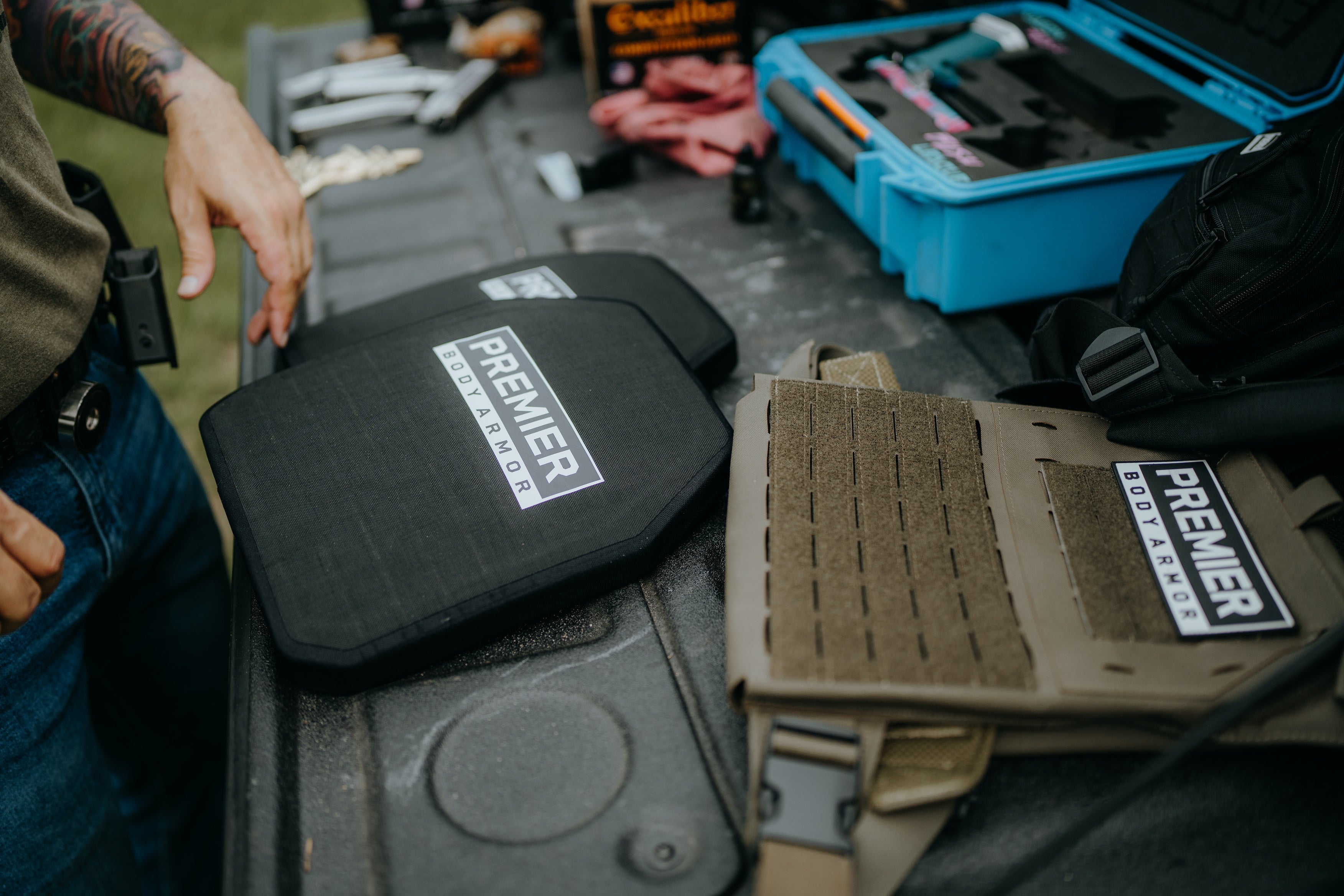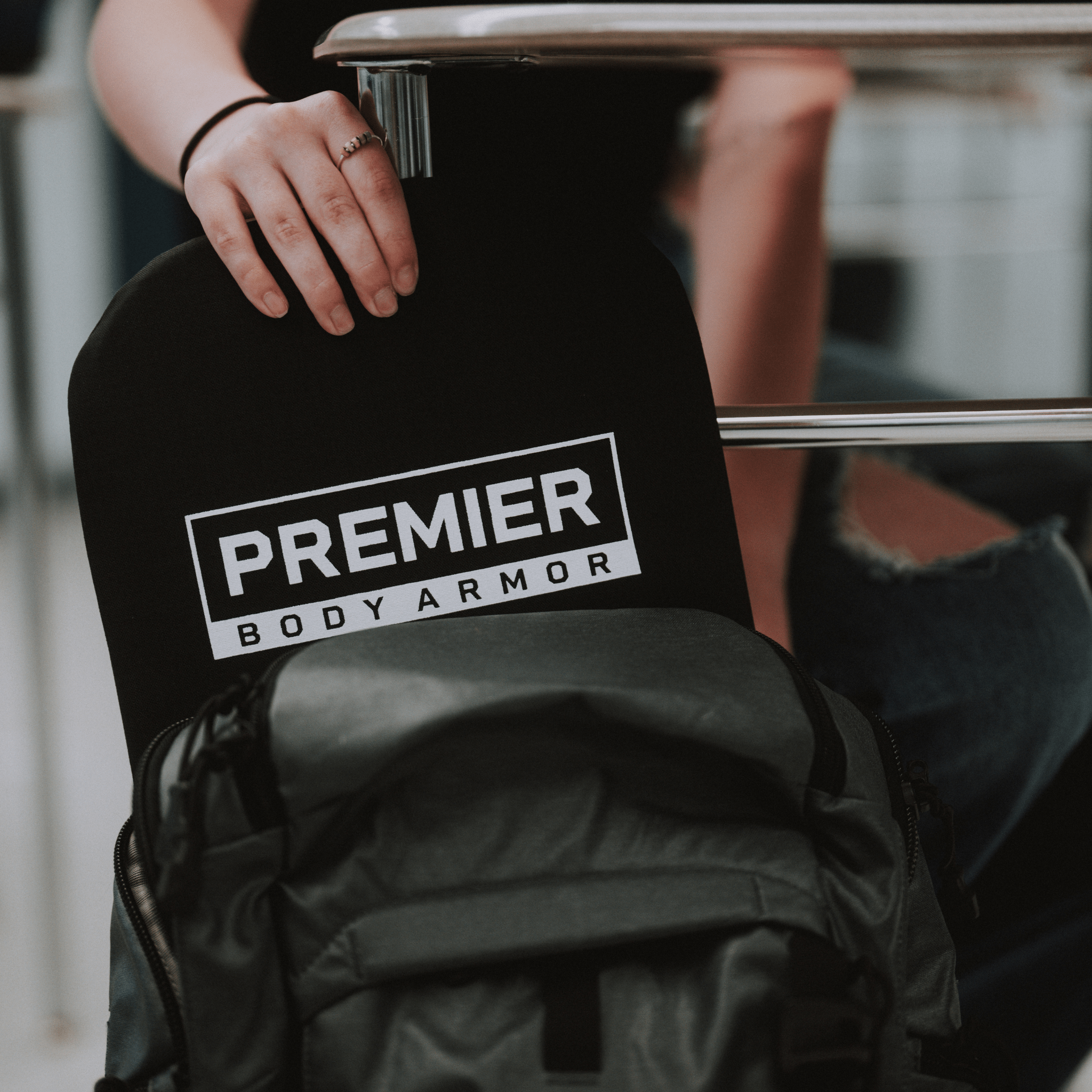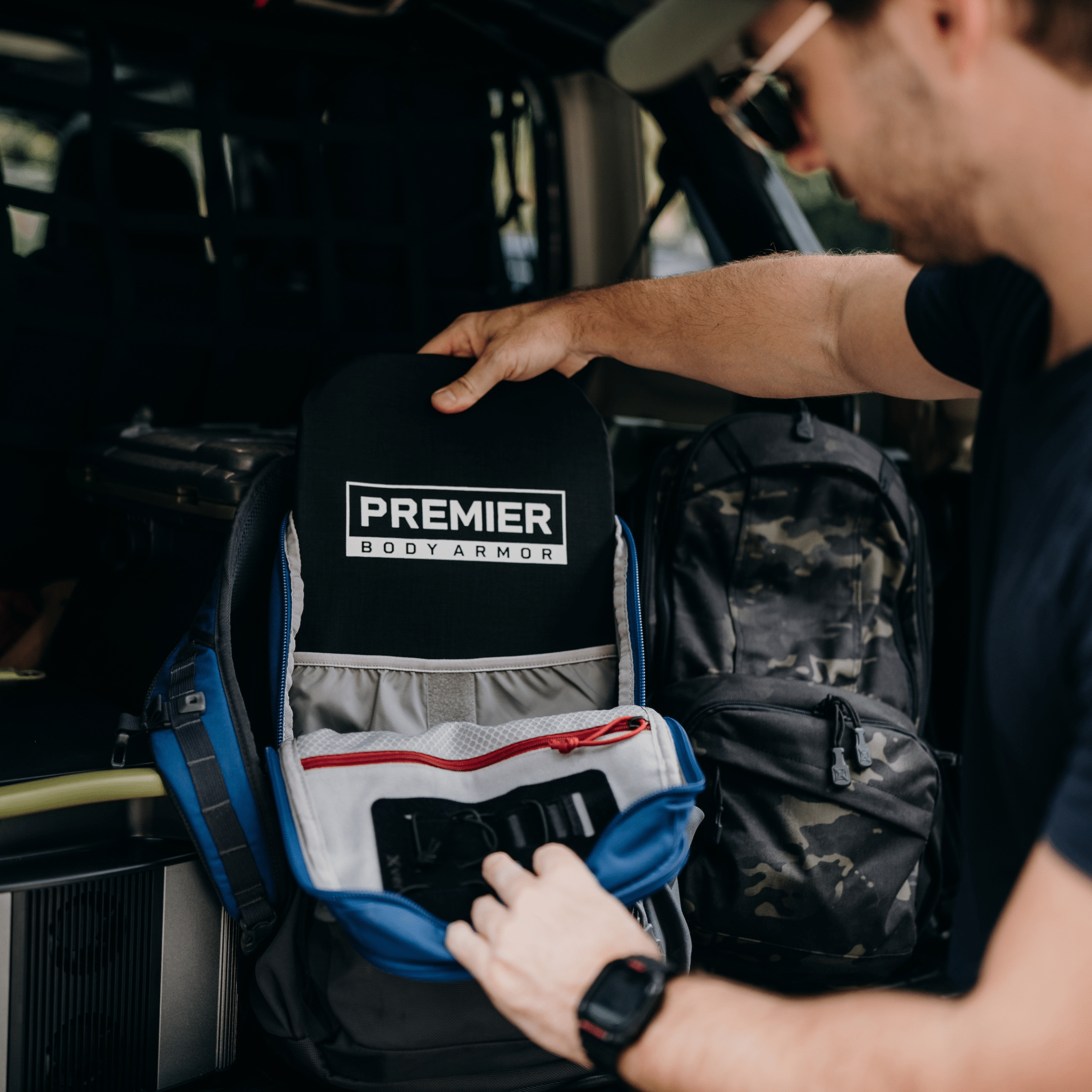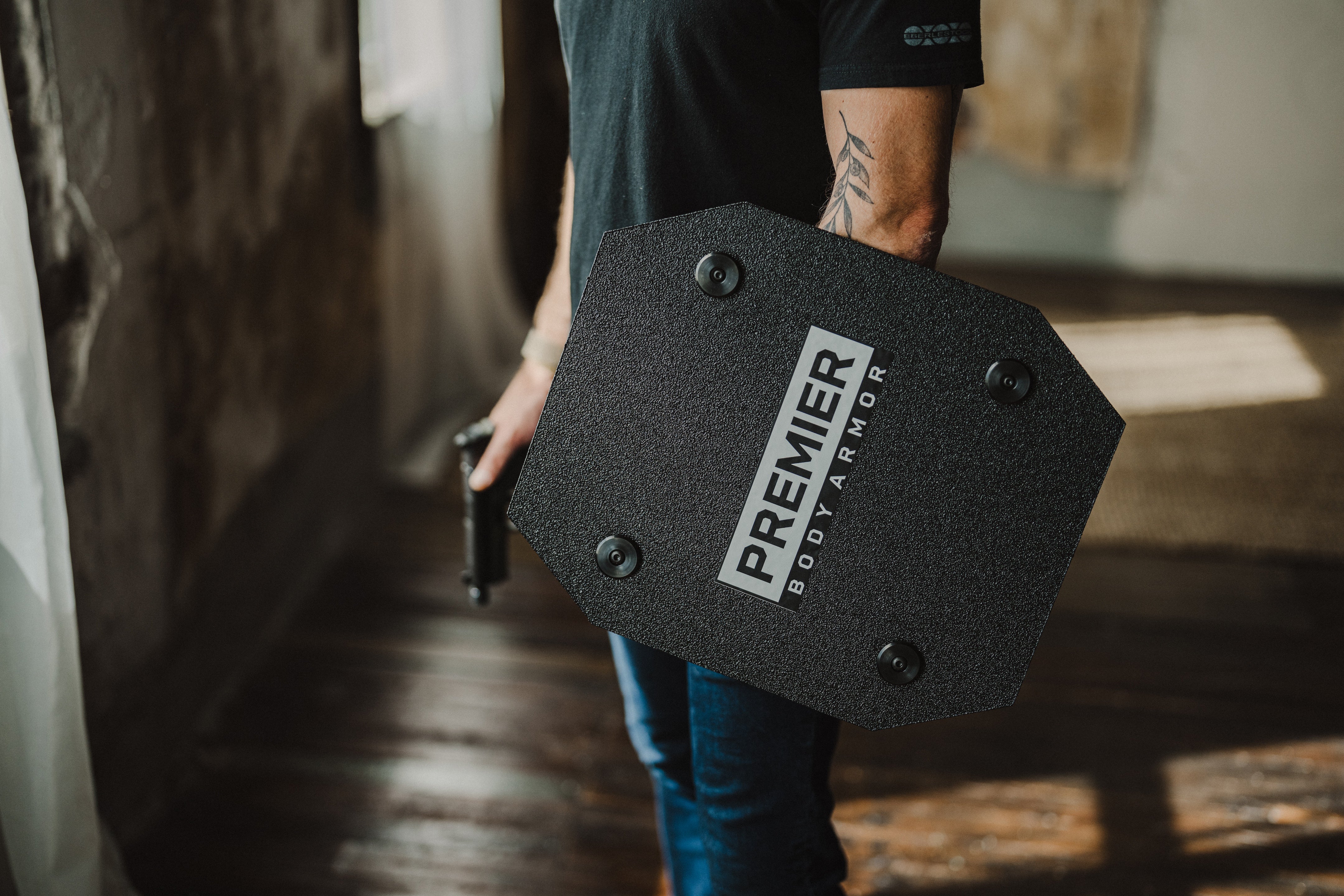Bump Helmets Vs. Ballistic Helmets - Which is Right for You?
How can some helmets be sold for less than $100, and others go for several thousands of dollars?
While it may not seem like it, helmets can look the same while their protection levels differ greatly. You hear a lot of terms being thrown around – Bump, ACH, high cut, IIIA, Ballistic… It can sound complicated, but there are really only a few key terms you need to understand. Today, we’ll be talking about the difference between a bump helmet vs ballistic helmet, as these are the two main helmets you’re likely to choose from.
We’ll cover ratings, accessories, and comfort, among other things, to help you get a good idea of what companies have to offer. Hopefully, by the time you finish reading this, you’ll have enough information to narrow your helmet search down a lot quicker. Let’s get started.
What is a Bump Helmet?
A bump helmet is essentially a non-bulletproof tactical helmet. They offer the same adaptability as a ballistic helmet, but a bump helmet is cheaper and, most importantly, lighter.
A bump helmet is good for non-combat situations where gunfire is unlikely. It protects against more than just “bumps”. A bump helmet is meant to protect against traumatic hits to the head, as well as falls and debris.
But what is a bump helmet used for? A lot of times, these helmets are used in military training, or for people that don't need the ballistic capabilities. It’s also common among EMS, search and rescue, outdoor enthusiasts, and people who work in tight spaces.
The key is their adaptability. A normal helmet doesn’t have the hardware to attach additional tactical equipment like night vision or communication equipment.
What is a Ballistic Helmet?
A ballistic helmet, AKA a tactical helmet or bulletproof helmet, is a helmet that protects against bullets and shell fragments. Ballistic helmets are used as proper body armor by police and military personnel.
So what is a ballistic helmet going to do that a bump helmet cannot? Other than provide ballistic protection, they are very much the same, even down to the design.
Ballistic helmets can typically be upwards of $700. But safety isn’t always something that makes sense to save money on.
We have one of the most competitively priced and well-designed ballistic helmets on the market today. If you want to read more about what goes into a helmet like this, check out the Fortis Ballistic Helmet.
The Key Features Between Bump Helmets and Ballistic Helmets
When it comes to deciding on a bump vs ballistic helmet, some people are going to prefer ballistic helmets, while others will prefer the comfort of a bump helmet.
That being said, a some people don’t mind the additional weight that comes with ballistic protection. If most people had to buy just one helmet, they’d prefer getting the one that stops bullets.
If you need a helmet to go caving, there’s much less need for bulletproof protection. However, if you’re in a combat situation, a bump helmet won't give you the necessary protection.
Beyond that, there’s not much else in terms of a bump helmet vs ballistic helmets. Besides the weight and price, bump helmets should almost always come with the same types of mounting options. This is the primary reason people get these helmets over a tactical helmet.
Consider the Protection Level Required from Your Tactical Helmet
There are different rating systems when it comes to a ballistic helmet vs bump helmet. While there are ballistic helmet protection levels, until very recently, the standards for helmets were outdated. Most ballistic helmets will be rated by third-party labs and have an equivalent rating of level IIIA. There are very few helmets that can even be considered rifle-rated in any capacity, mostly due to the issue of backface deformation.
So what does a bump helmet protect you from? This may not be a concrete answer. In terms of bump helmets, there are a wide variety of standards. Some of them include:
- ASTM F1492-15: American Society for Testing and Materials standard for helmets used in skateboarding, trick roller skating, and other activities with similar impact risks.
- EN 1385:2012 European Norm standard that specifies the requirements and testing methods for helmets used in canoeing and white-water sports.
- EN 1078: European Norm standard for helmets used in cycling, skateboarding, and roller skating.
- EN 12492: European Norm standard for mountaineering helmets.
- ANSI Z89.1: American National Standards Institute standard for industrial head protection (hard hats).
- UIAA 106: International Climbing and Mountaineering Federation standard for climbing helmets, ensuring they meet specific requirements for impact and penetration resistance.
- PAS 028:2002: Publicly Available Specification for marine safety helmets.
As you can see, the process of rating bump helmets is a lot more complicated than ballistic helmets. Why is that? To start, a bullet to your helmet is a relatively specific and severe circumstance. On the other hand, bump helmets can be optimized for a wide range of uses.
For instance, rock climbing helmets are tested to withstand falling rocks, while downhill mountain biking helmets are tested to withstand falls. Think about what you’re doing, and you can likely find a standard designed to meet those requirements.
Bump Vs. Ballistic Helmet Comfort Levels
A bump helmet will typically be more comfortable than a ballistic helmet. The bump helmet weight is almost always noticeably lighter. Bump helmet comfort is also easier to achieve because there is more flexibility for holes and proper ventilation, which you obviously wouldn't want in a ballistic helmet.
That being said, many people simply find tactical helmets more comforting for their peace of mind.
If you have a tactical helmet, adjustments can be made to get the fit of your helmet right. So how should a ballistic helmet fit?
The most important thing is that it isn’t “wobbly" when tightened securely. If you can fit more than two fingers between your chin and the strap, it’s not tight enough. If it’s properly secure and it’s still wobbly, the helmet is most likely too big.
Most manufacturers have sizing guides. This is definitely not one of those things you should try and guess on.
Ballistic and Bump Helmets are Made of Different Materials
Bump helmets are typically made from Acrylonitrile butadiene styrene (ABS) plastic, the same common plastic used in car interiors and computer keyboards. The reason for this is that this type of plastic has an optimal balance of weight, strength, and price. This is why you will find them in almost every bump helmet.
That being said, you can also buy more expensive bump helmets made with carbon fiber shells. These are stronger and lighter than your typical ABS bump helmet. Keep in mind, a good ABS bump helmet will still cost several hundred dollars.
Ballistic vs bump helmet materials differ greatly. Ballistic helmets are usually made of Ultra High Molecular Weight Polyethylene (UHMWPE) or aramid fibers like Kevlar. Our Fortis Ballistic Helmet is made with aramid fibers, with a 7075 aviation-grade aluminum shroud, and reinforced polycarbonate rails.
Accessory Compatibility for Different Tactical Helmets
When it comes to tactical helmets, bump helmets and ballistic helmets are relatively similar. Common bump helmet accessories include NVG (night vision goggle) mounts, cameras, space for communication devices and rail systems.
Ballistic helmets, too, are designed to accommodate the same, or similar, tactical gear. Ballistic helmet accessories can also include advanced communication equipment and some kind of visor or shield. These enhancements are less focused on comfort and more focused on maintaining operational efficiency and protection.
You can find both bump and ballistic helmets that are made for almost every type of accessory you can think of. Usually, it’s relatively easy to modify existing helmets to hold most types of accessories. There are even ways to DIY your own helmet camo, to really make it your own.
Prices Will Differ Between Ballistic and Bump Helmets
Bump helmets are almost always in the $100-$300 range, but can sometimes cost upwards of $700. A ballistic helmet price tag will vary much more than that of a bump helmet. You can find some for around $600, but very advanced helmets can get as high as $3000+.
If you want the best bump helmet for the price, we recommend getting your hands on an official helmet from ops-core, or any other manufacturer that supplies helmets to the US military. If you’re doing any sort of work that may result in trauma to the head, don’t cut corners and buy a $50 airsoft helmet. Make sure it has at least met one of the specifications listed earlier.
With ballistic helmets, it’s hard to get a “good deal”. Many people expect to spend $100-200 on a nice helmet but find that they can’t even get an old used helmet for that much. Believe it or not, stopping a bullet from going through your head is a very complicated feat of engineering, and it’s an expensive process. That being said, we’re lucky to have it available to us.
Which Tactical Helmet is Right for You: Bump or Ballistic?
This entire bump helmet vs ballistic helmet debate holds a lot of key distinctions. But it should really just come down to one question: am I worried about ballistic protection, or just mounting accessories?
Let’s talk about a bump helmet vs ballistic helmet for SHTF situations. Yes, it’s hard to prepare when you feel completely safe in your day-to-day life. You may purchase a helmet and never even bring it out of storage.
But if things truly went downhill, do you really think a bump helmet will give you any sort of peace of mind? Which helmet would you rather have in that situation? The point is–in a true worst-case scenario, you'll be grateful for spending a few extra bucks for protection.
We have an entire page just dedicated to ballistic helmets. If you’re interested in more of a break down about these helmets, check out our Comprehensive Guide to Ballistic Helmets.
In Short...
At the end of the day, your choice between a bump helmet and a ballistic helmet will probably come down to where and how you plan on using it. But for others, it can be a bit more complicated.
Maybe it will come down to the weight your body can safely and comfortably handle. Maybe it will come down to your budget if you only need a bump helmet right now. Perhaps it will come down to how much uncertainty you expect in the future.
For most people prepping for a non-combat situation, the lightweight and adaptable bump helmet is probably the way to go. But if there’s any chance you’ll face gunfire, there is no substitute for a proper ballistic helmet.










Is this a Nortos or Wilcox mount for NVG?
Thanks!
Leave a comment